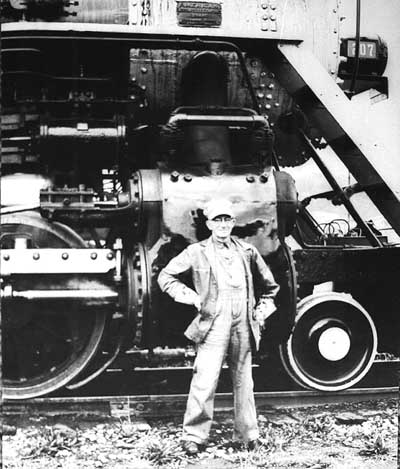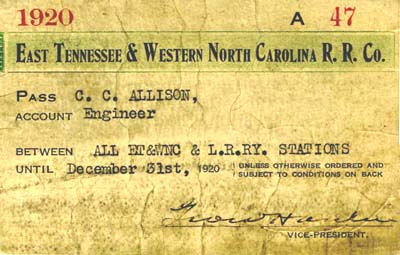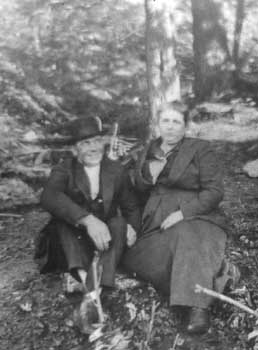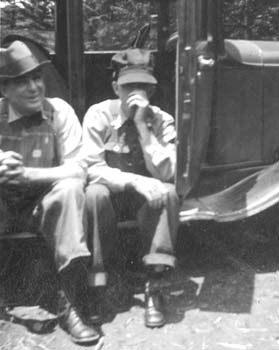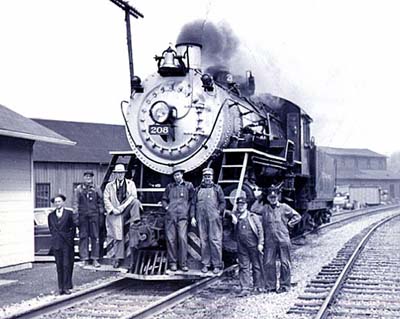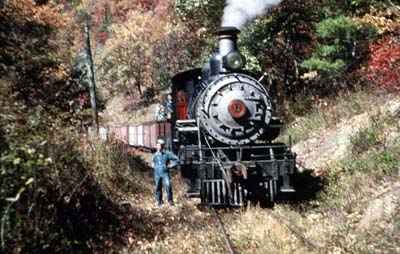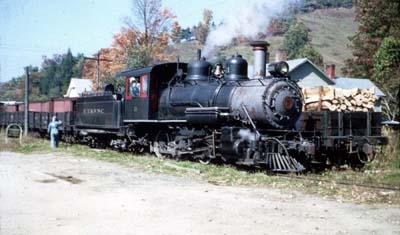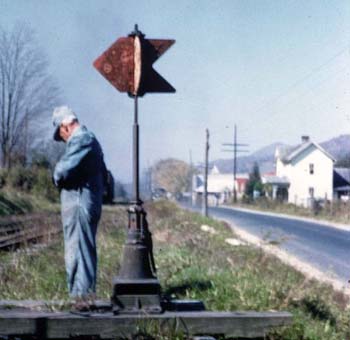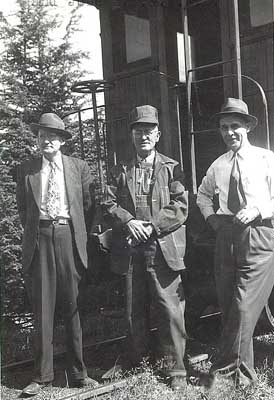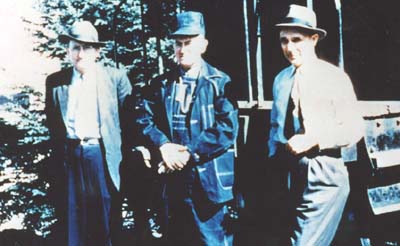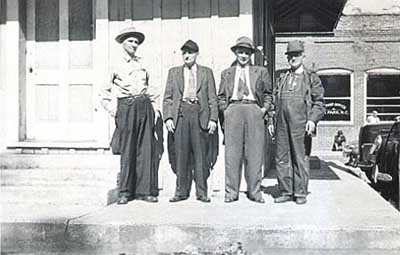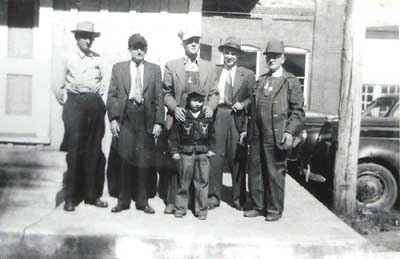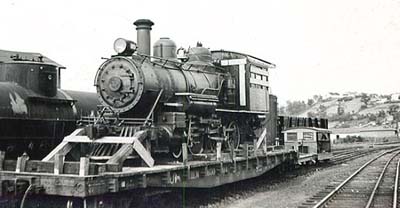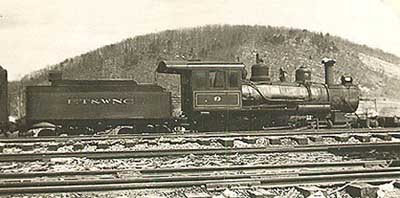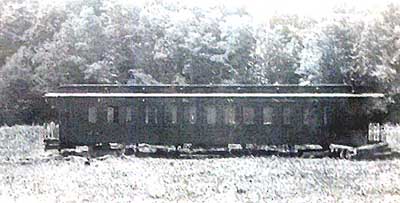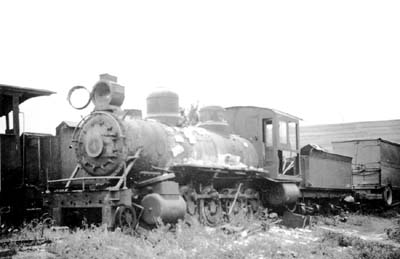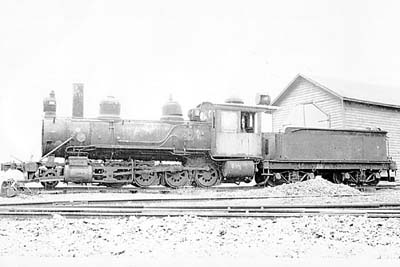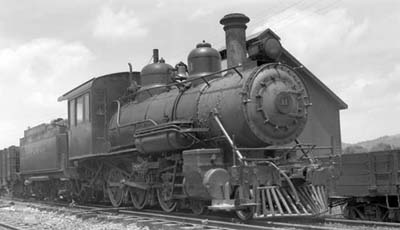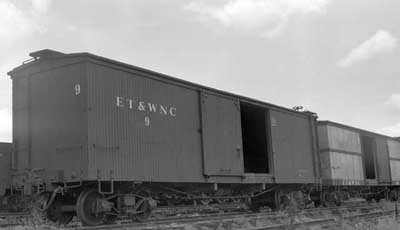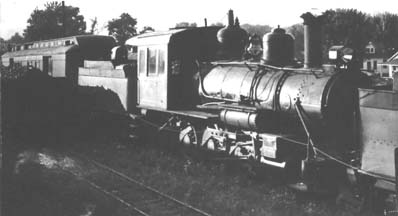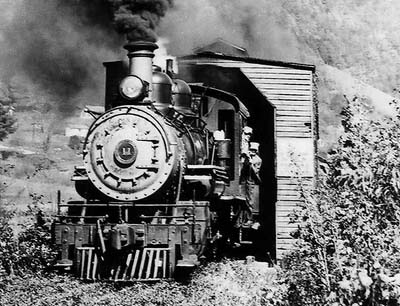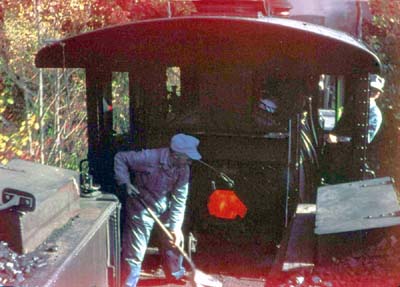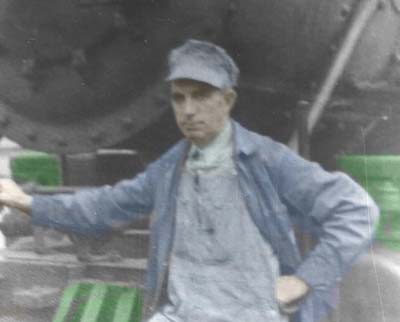Raymond McCoury, George Q. Williams, Kenneth Jobe and Mr. Crumley on the platform of the Elk Park depot, October 16, 1950. During the last years the narrow gauge ran after World War II, the crews usually ate their lunch here at the depot. The depot stood right in what is now highway 19-E in Elk Park, more or less across from that old concrete wall that still stands today on the south side of the highway.
Another photo is shown below from the last run which has stopped for lunch at Elk Park. Raymond McCoury was a retired conductor, but lived in Elk Park and came down to meet the train, George Q. Williams was a retired conductor and rode the train from Elizabethton with his son, Frank Williams, a conductor on the Southern Railway, who brought his son Frank Junior. Kenneth Jobe was a retired conductor who rode the whole trip, and the conductor on the run that day was Mr. Cy Crumley. These gentlemen knew how historic the final run of the narrow gauge ET&WNC was and we tip our caps in gratitude for commemorating events of that day.
|
